■ Evaluating the Five Virtual Sound Sources of the EP-1 Engine in the Korg Nautilus
This is Part II of my deep-dive report on the electric piano (EP) capabilities of Korg’s workstation synthesizer, the Nautilus.
In the previous article, we took a general overview of the Nautilus’s electric piano engine — the EP-1 — and I introduced the system setup used for evaluating its electric piano sounds.
The EP-1 engine includes five Tine-type (Rhodes-style) sound sources and two Reed-type (Wurlitzer-style) sound sources. These seven core sound types form the foundation of the Nautilus's electric piano presets.
■ Two Timeless Classics: The Rhodes Electric Piano and Wurlitzer Electric Piano
When it comes to electric pianos, two legendary models are widely recognized: the Rhodes Electric Piano and the Wurlitzer Electric Piano.
The Korg Nautilus comes loaded with sound sources based on a total of seven variations: five different Rhodes-style models from various eras and two Wurlitzer-style models. These serve as the foundational sound engines for its electric piano presets.
To access these sound sources on the Nautilus: From the Set List screen, tap an electric piano sound labeled “EP”. Then, press the MODE button located at the top left of the Quick Access buttons. (See Screen 1)
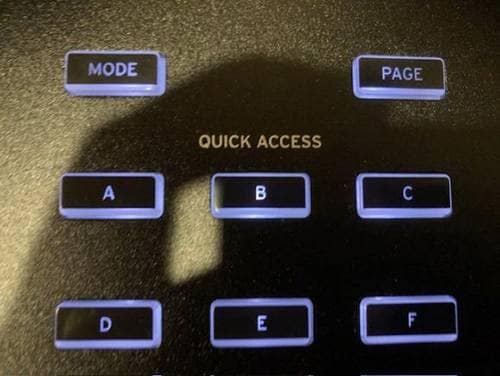
Quick access button MODE button is top left (Screen 1)
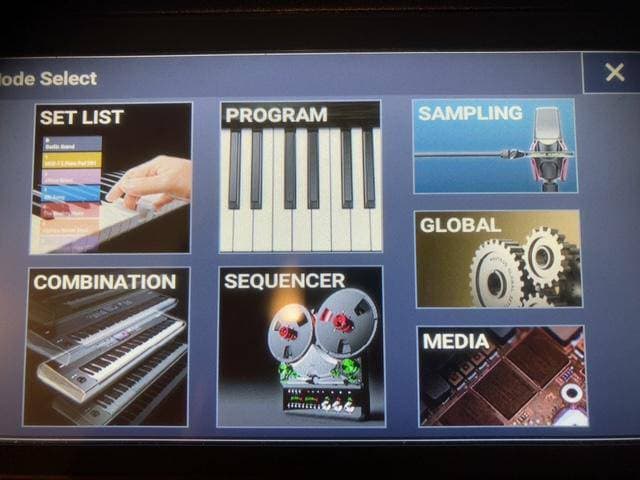
Mode select (Screen 2)
Mode Select (Screen 2): From the Mode Type Select screen, tap the PROGRAM button to open the electric piano sound engine screen.
■ EP-1 Rhodes Piano Sound Source Evaluation
1. Tine EPⅠ Early
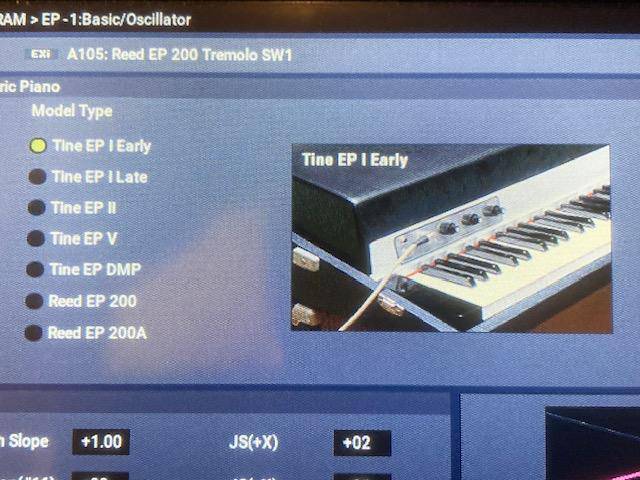
The high frequencies of this sound give an impression similar to that of an acoustic piano sample. In the 61-key version, the higher register (the 4th octave of E♭ and up) shows a stronger metallic, vibraphone-like sound that is characteristic of the Rhodes. In the octave below, around A (A3), the sound feels thinner compared to the Late type, especially in the range most commonly used for Rhodes pianos. This is understood to be a characteristic of the early Fender Rhodes piano.
(Note: For reference, in a 61-key setup, the highest range is referred to as the 5th octave. As we move lower, the octaves are labeled 4, 3, 2, and 1 accordingly.)
Even around the 3rd octave (A3), when played heavily, the sound gains the signature distorted character of the Rhodes. However, it lacks the thickness of the later Late type in this range.
This trend continues into the lower registers (1st and 2nd octaves), where bass notes also exhibit a similar characteristic of not having much thickness. This sound might be more suitable for tracks where the electric piano is not the prominent feature.
The sound of this Rhodes model makes me think of the Rhodes piano Chick Corea played on the classic track "Spain" from the album Light as a Feather by Return to Forever.
2. Tine EPⅠ Late
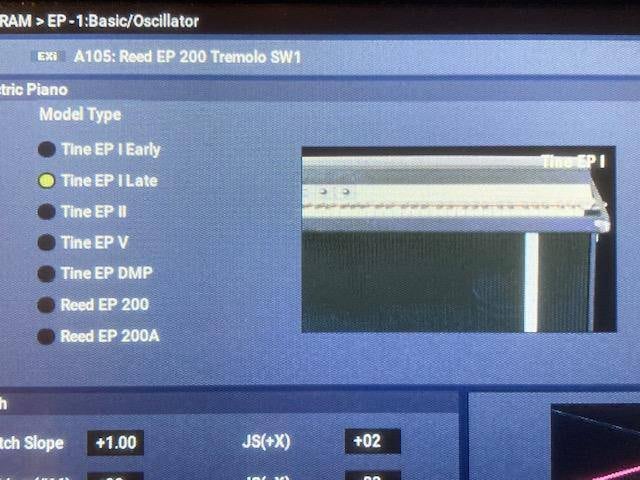
The high frequencies around the 5th octave are similar to the Early type, with a sound that is close to the sampled acoustic piano. From the 4th octave E♭, the distinctive vibraphone-like metallic sound of the Rhodes becomes more prominent. Starting from around A (A3) in the 3rd octave, the sound takes on the muffled, characteristic Rhodes tone, but the sound in this region is noticeably thicker compared to the Early type.
When playing bass notes in the 1st and 2nd octaves, the typical Rhodes distortion comes through nicely. The sound is thicker than the Early type, which gives it more stability in the lower frequencies.
This smooth, non-intrusive distortion is a hallmark of the Rhodes piano. It’s the quintessential Rhodes sound that many keyboardists are searching for! The impression it leaves is that this is the Rhodes sound.
Personally, it was this exact tone that made me decide to purchase a real Rhodes piano.
3. Tine EPⅡ
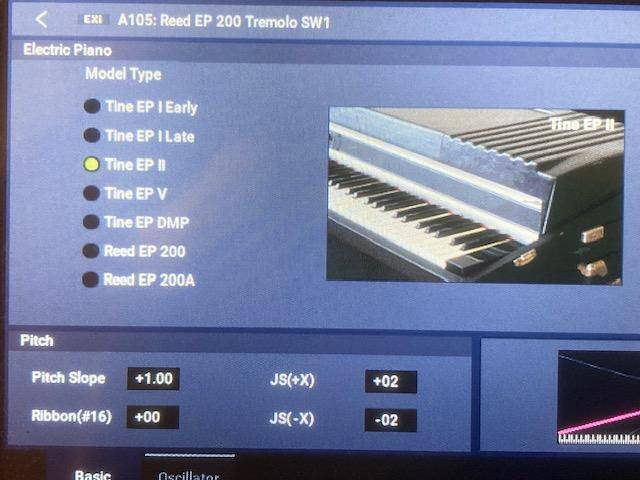
The high frequencies of the Tine EP II are not significantly different from those of the Early and Late types. From the 2nd octave E♭, the sound becomes noticeably clearer, and the contours of the sound become more defined. In the midrange, around the 3rd octave, which is the most commonly used range, the muffled quality of the Late type is absent, and the clear, distinct tone of the Tine is evident.
In the lower frequencies, from the upper 2nd octave, the clarity diminishes, and the sound becomes rounder.
This might be a matter of personal preference, but when playing in the mid-to-low register with force, the characteristic distortion of the Rhodes is less pronounced. The sound is similar to the Rhodes II model I played when I was deciding to buy a real Rhodes piano. Even when playing strongly in the lower frequencies, the sound does distort, but it doesn’t have the pleasant, characteristic Rhodes distortion. Instead, it distorts in a way that doesn’t feel natural, as the connection between finger and sound seems off.
This sound is present in the live performance of “Spain” with Chick Corea and guitarist Bill Connors from Return to Forever.
4. Tine EP Ⅴ
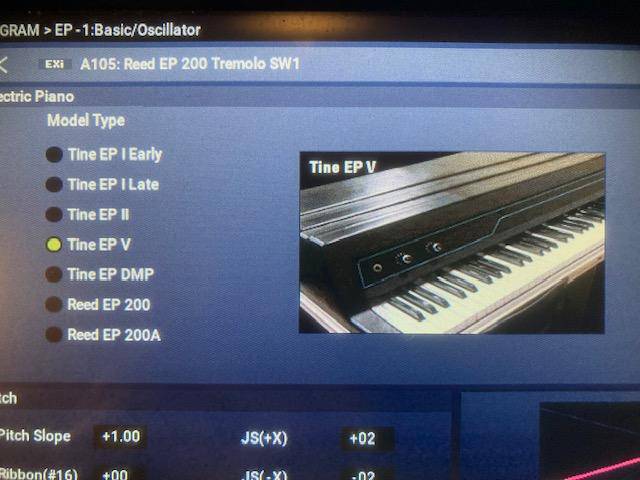
Compared to the previous three models, the Tine EP V is the clearest and most vivid across all the octaves, from high to low. From the 4th octave G, the attack of the metallic sound suddenly becomes much stronger.
This sharp change in tone around the split point is likely due to a characteristic of the sampled real instrument. I recall that my own Rhodes piano also had a point where the tone changed abruptly, though I can’t remember exactly where. When playing through the notes, you’ll be surprised by these sudden shifts in sound, but in actual performance, they don’t feel out of place. This may be just a natural feature of the Rhodes piano.
In the most frequently used range around the 3rd octave, when played with force, the sound is clear and distorts beautifully, creating a strong connection between the fingers and the keys. The Late type has a muffled tone that distorts, but the V type offers a clean, clear sound that distorts beautifully, which leaves a positive impression. It has a very open and expressive tone.
In the lower frequencies, from the 2nd G an octave down, the distortion becomes more pronounced. The sound is bright and modern — a style I personally like.
However, in the higher registers, when playing two or more notes at once, the sound can become sharp and piercing to the ears, which might feel uncomfortable. This is the type of Rhodes that Chick Corea used in his early electric band.
This V type also has MIDI functionality, and Chick Corea used it to control multiple sound sources, like FM synthesis, with the Rhodes Piano V.
5. Tine EP DMP
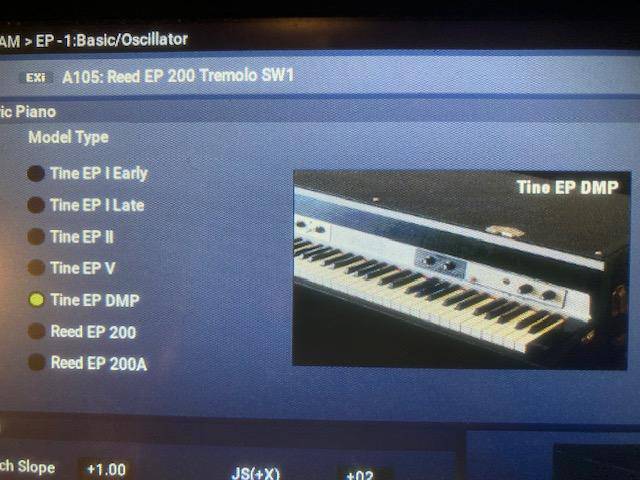
In the late 1970s, a modified version of the Rhodes piano called the "Dyno My Piano" was developed on the West Coast. The sound simulation here is labeled as Tine EP DMP, with "DMP" derived from Dyno My Piano.
The sound quality of this simulation feels quite different from the actual Dyno My Piano. Specifically, it lacks the richness, the gritty, almost raw character that the Dyno My Piano is known for.
When played with force, the sound generally feels too harsh. The Dyno My Piano was recognized for its rich midrange, sparkling high notes, and the deep, rich low end, which was more pronounced and created more of a popping sound. While the high and low frequencies are indeed emphasized in this simulation, the crucial midrange is thinner, and this prevents it from truly capturing the essence of the Dyno My Piano sound.
This EP-1 sound source separates the pitch components (the body of the sound) from the hammer, key release, and noise components (the noise associated with the beginning and end of the note). This means that you can control the body and noise separately. In this sense, by editing the body component, it may be possible to get closer to the sound of the Dyno My Piano. I plan to investigate this further.
Does sampling the Dyno My Piano result in this type of sound? I’m not sure, but I’m curious enough to ask the Korg engineers about it
Next time, I plan to review the sound sources that simulate the Wurlitzer Electric Piano.
The “sound & person” column is made up of contributions from you.
For details about contributing, click here.





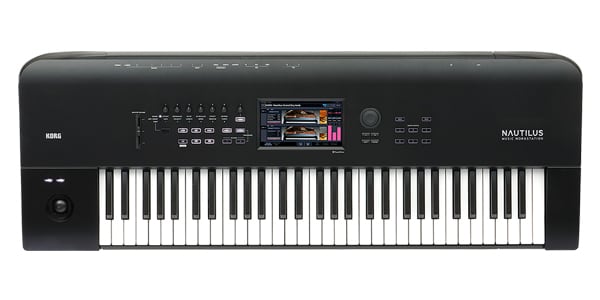








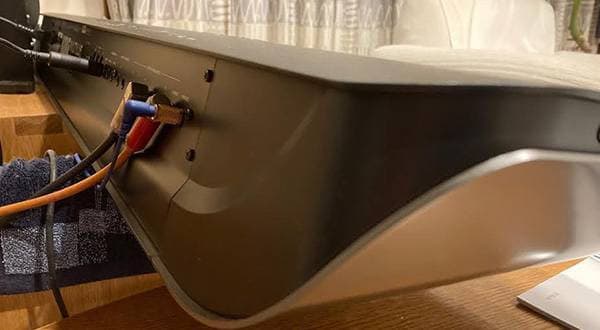
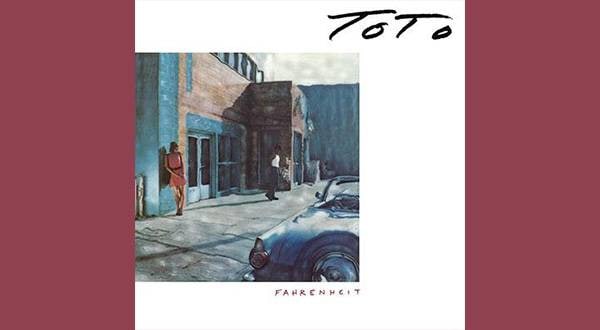
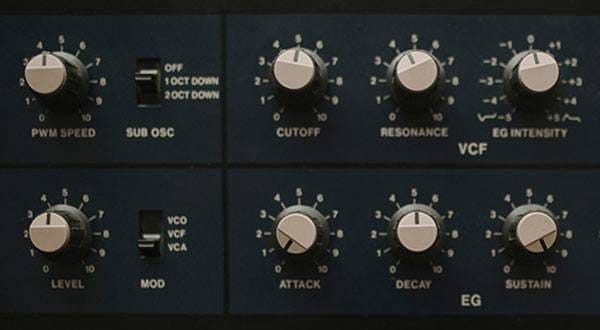
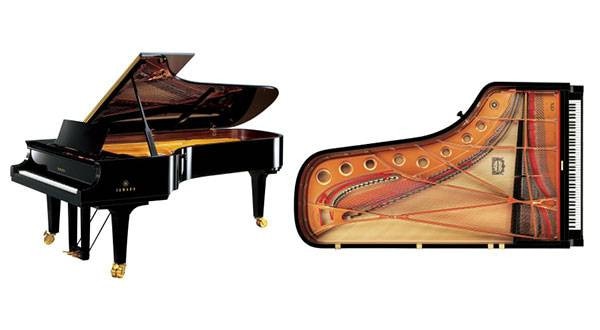
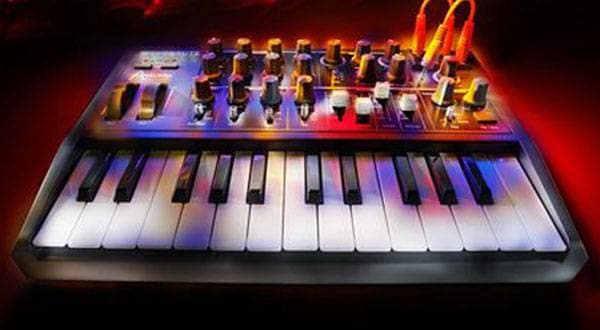
 エレクトリックピアノ 入門ガイド
エレクトリックピアノ 入門ガイド
 シンセサイザー 入門ガイド
シンセサイザー 入門ガイド
 ステージピアノ 入門ガイド
ステージピアノ 入門ガイド
 PLAYTECH 鍵盤特集
PLAYTECH 鍵盤特集
 おすすめの電子ピアノ
おすすめの電子ピアノ
 キーボードスタートガイド
キーボードスタートガイド















